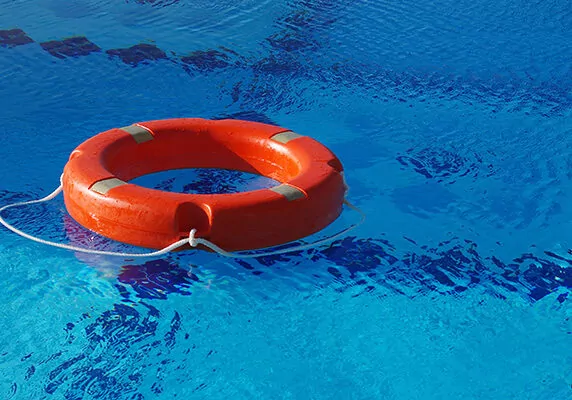Cycling is an increasingly popular mode of transportation and recreation that promotes health and environmental sustainability. Statista reports 51 million Americans rode a bike in 2021, the second highest number to date following a peak of 53 million during the pandemic year of 2020. After running and fishing, biking is now the third most popular outdoor activity in the United States.
However, recent statistics from the National Highway Traffic Safety Administration (NHTSA) reveal a troubling trend: cycling fatalities reached 966 in 2021, the most deaths in a single year since 1975. Ken McLeod, policy director of The League of American Bicyclists, told Insurance Journal:
“Traffic fatality data in the United States is trending in the wrong direction. Especially for people outside of vehicles, the last decade has seen consistent increases in traffic deaths leading to multi-decade highs.”
The Rising Trend of Cycling Fatalities
The NHTSA report shows a consecutive increase in cycling deaths in recent years.
- 2019: 858
- 2020: 948
- 2021: 966
The 2017-2021 data represents an average rate of 2.7 fatal bicycle crashes for every million U.S. residents, a 5% increase over 2012-2016.
According to the report, several factors contribute to the rise in cycling fatalities. Increased traffic volume, distracted driving, inadequate cycling infrastructure, and a lack of awareness among motorists about sharing the road with cyclists all serve to create hazardous conditions for pedal bikers. The NHTSA data also reveals that more than half of the total cycling deaths in 2021 occurred in the top five states: Florida, California, Texas, New York, and Arizona.
The Impact of Urban and Rural Settings
While California’s many purpose-built bike paths — Marvin Braude Bike Trail in LA, the Presidio in San Francisco, and Monterey Bay Coastal Recreation Trail, to name a few — offer hundreds of miles of protected riding, busy roadways pose inherent dangers to bicyclists.
The data highlights significant disparities between urban and rural areas. Since 2012, pedal cyclist fatalities in urban areas have increased by 62%, while they have decreased by 38% in rural areas. Moreover, the proportion of fatalities “outside the vehicle,” including motorcyclists, pedestrians, and pedal cyclists, has risen from 20% in 1996 to a high of 34% in 2021.
How to Prepare a Lawsuit Following a Fatal Cycling Accident
Losing a loved one in a fatal bicycle accident is a devastating experience. If you believe that negligence or wrongful actions contributed to the accident, you may have grounds for a wrongful death lawsuit in California. Here are the very basic steps to follow when filing a lawsuit in such a situation:
- Seek Legal Counsel: Consult with an experienced personal injury attorney who handles wrongful death cases. They will guide you through the legal process, provide valuable advice, and ensure your rights are protected.
- Collect Evidence: Gather as much evidence as possible to support your case. This may include accident reports, witness statements, photographs of the accident scene, medical records, and any other relevant documentation that helps establish liability.
- Determine Liability: Work with your attorney to establish who may be held responsible for the accident. This could include the driver of a motor vehicle, a property owner, or any other party whose negligence or wrongful actions contributed to the incident, which may include a defective product.
- Notify Potential Defendants: Your attorney will help you identify the parties that should be notified of your intent to file a lawsuit. This typically involves sending a formal notification letter to the potentially liable parties, informing them of your intention to seek compensation.
- Calculate Damages: Determine the financial and non-economic damages resulting from the loss of your loved one if it’s a wrongful death case. This may include medical expenses, funeral costs, loss of financial support, loss of companionship, and emotional suffering. Your attorney will assist you in accurately calculating the damages.
- File the Lawsuit: Once you have gathered the necessary evidence, notified potential defendants, and calculated the damages, your attorney will file the lawsuit on your behalf. The lawsuit will outline your claims, supporting evidence, and the compensation you are seeking.
- Engage in the Discovery Process: During the discovery phase, both parties exchange information and evidence relevant to the case. This may involve depositions, interrogatories, requests for documents, and expert witness testimonies.
- Negotiate or Proceed to Trial: Your attorney will negotiate with the defendant’s legal representation to reach a fair settlement. If a satisfactory agreement cannot be reached, your case may proceed to trial. Your experienced attorney or law firm will present your case, call witnesses, and argue for the compensation you deserve.
- Litigation and Verdict: If your case goes to trial, the court will hear the evidence and arguments from both sides. A jury will then make a decision and render a verdict. If successful, you will be awarded the compensation determined by the court.
- Post-Trial Proceedings: After the trial, there may be post-trial proceedings, such as appeals or motions, depending on the outcome. Your attorney will guide you through these processes, ensuring your interests are protected.
Penney & Associates Can Help
Filing a lawsuit following a fatal bicycle accident is a complex and emotionally challenging process. The experienced attorneys at Penney & Associates can navigate the legal system on your behalf. We will fight for your rights and seek the compensation you deserve while providing you with the necessary guidance and support throughout the entire process. Contact us today for a free consultation.
Read more
5 Factors that Affect Bicycle Accident Compensation in California
Accident or Negligence? What to Keep in Mind if You’ve Suffered Traumatic Injuries
Electric Bikes & Scooters: Lawsuits Follow Growing Number of Accidents



